Dwarf Pomegranate Punica granatum var. nana

ABOUT
The plant, commonly known as the dwarf pomegranate, sports glossy, lance-shaped leaves that present a deep, rich green hue. Throughout the year, it blossoms with vibrant, funnel-shaped flowers, typically fiery red or orange, which are substantial for the overall size of the plant. The blooming phase ushers in a remarkable contrast to the foliage with its showy demeanor. Following the flowering period, the plant produces miniature versions of the typical pomegranate fruit, bearing a resemblance to their larger counterparts with a tough outer skin that may vary in color from hues of red to sometimes yellowish. The distinctive appearance of this fruit includes a rounded shape with a persistent, tubular calyx at the top, a signature feature of the pomegranate. The interior of these fruits houses numerous seeds each enveloped in a juicy, ruby-red aril that is both tart and sweet. This plant offers a lush, ornamental presence, with its seasonal changes adding to its visual appeal.
About this plant
 Names
NamesFamily
Lythraceae
Synonyms
Dwarf pomegranate, Nana pomegranate, Miniature pomegranate
Common names
Punica nana, Punica granatum var. pygmaea, Punica granatum subsp. nana.
 Toxicity
ToxicityTo humans
Dwarf Pomegranate (Punica granatum var. nana) is generally considered non-toxic to humans. The fruit is edible, and there are no widespread reports of toxicity from consuming the leaves, stem, or flowers. However, if consumed in large quantities, plant parts other than the fruit could potentially cause stomach irritation or discomfort due to tannins present in the plant.
To pets
Dwarf Pomegranate is also not commonly known to be toxic to pets. The fruit is edible, and there are no significant reports of toxicity from pets consuming the leaves, stem, or flowers. Nevertheless, as with humans, large amounts of non-fruit parts of the plant could potentially cause mild gastrointestinal upset in some pets due to the presence of tannins.
 Characteristics
CharacteristicsLife cycle
Perennials
Foliage type
Deciduous
Color of leaves
Green
Flower color
Orange-red
Height
2-3 feet (0.6-0.9 meters)
Spread
2-3 feet (0.6-0.9 meters)
Plant type
Shrub
Hardiness zones
7
Native area
Iran
Benefits
 General Benefits
General Benefits- Ornamental value: The dwarf pomegranate (Punica granatum var. nana) is celebrated for its attractive flowers and compact growth habit, making it a popular choice for ornamental use in gardens and pots.
- Drought resistance: It is well-suited to dry climates as it is drought-resistant, requiring minimal water once established.
- Edible fruit: Although smaller than the fruit of the standard pomegranate, the dwarf variety does produce edible fruit with a taste similar to its larger counterparts.
- Wildlife attraction: The flowers of the dwarf pomegranate can attract pollinators like bees, while the fruit can attract birds to the garden.
- Low maintenance: Punica granatum var. nana generally requires minimal pruning and care, making it well-suited for low-maintenance landscapes.
- Containers and bonsai: Due to its small size, it is an excellent choice for growing in containers, including the practice of bonsai.
- Seasonal interest: It offers seasonal interest with its bright red-orange flowers in the spring and summer, followed by fruit in the fall.
 Medical Properties
Medical Properties- Antioxidant: Contains compounds that may protect cells from damage by free radicals.
- Anti-inflammatory: May reduce inflammation in the body.
- Antimicrobial: Exhibits activity against certain bacteria, viruses, and fungi.
- Antitumor: Contains phytochemicals that have been studied for their potential to slow or prevent tumor growth.
- Cardioprotective: Might be beneficial for heart health by influencing cholesterol levels and blood pressure.
- Gastroprotective: Can help protect the stomach lining and support ulcer healing.
- Antidiabetic: Could help in managing blood sugar levels, though more research is needed.
- Antiparasitic: Has shown activity against some parasites in traditional use.
- Hepatoprotective: May offer protection against certain liver diseases or damage.
- Dental health: Its extracts have been used in improving oral hygiene and reducing dental plaque.
 Air-purifying Qualities
Air-purifying QualitiesThis plant is not specifically known for air purifying qualities.
 Other Uses
Other Uses- Pomegranate bonsai - Punica granatum var. nana is often used in bonsai culture due to its small size and attractive blooms and fruits, making it a popular choice for decorative indoor plant art.
- Natural dye - The rind of the pomegranate contains tannins that can be used to produce a natural dye for fabrics and art materials, yielding shades of yellow, brown, or grey depending on the mordant used.
- Ink production - The juice of the pomegranate fruit can be utilized to make a semi-permanent ink for writing or drawing, known for its unique hue.
- Educational tool - Pomegranate var. nana can be used in schools and educational programs to teach students about plant growth, fruit development, and the life cycle of flowering plants.
- Culinary training - In culinary schools, the miniature pomegranate can be employed as a learning aid to demonstrate proper pomegranate handling and seed extraction techniques.
- Photography prop - Due to its aesthetic appeal, pomegranate bonsai trees are sometimes used by photographers as props in still life and food photography.
- Religious ceremonies - In some cultures, the small pomegranate fruits are symbolically used in certain religious ceremonies to represent fertility and abundance.
- Jewelry making - Dried pomegranate seeds from the dwarf variety are occasionally incorporated into jewelry or decorative pieces as beads or embellishments.
- Floral arrangements - The branches with unopened buds or dried blooms of Punica granatum var. nana can be used for an exotic touch in dried floral arrangements and crafts.
- Traditional crafts - In certain traditional practices, the shells of the pomegranate fruit are used to create decorative boxes or ornaments, particularly in regions where the plant is native.
Interesting Facts
 Feng Shui
Feng ShuiThe Dwarf Pomegranate is not used in Feng Shui practice.
 Zodiac Sign Compitability
Zodiac Sign CompitabilityThe Dwarf Pomegranate is not used in astrology practice.
 Plant Symbolism
Plant Symbolism- Fertility and Abundance: The Punica granatum var. nana, commonly known as the Dwarf Pomegranate, bears fruit that has numerous seeds, symbolizing fertility and the potential for abundant progeny.
- Eternal Life: Pomegranates are often associated with eternal life due to their long shelf-life and the enduring nature of their seeds, which can represent the soul's immortality.
- Marriage and Union: Because of their many seeds, pomegranates are sometimes used in wedding ceremonies to symbolize the hope for a marriage filled with as many offspring.
- Prosperity and Wealth: In many cultures, the multitude of seeds in a pomegranate represents prosperity and future success, as well as material wealth.
- Knowledge and Wisdom: The complex internal structure of a pomegranate, with its compartments of seeds, is sometimes seen as a symbol of the complexity and richness of knowledge.
 Water
WaterDwarf Pomegranate should be watered deeply once every 7 to 10 days, allowing the soil to dry out slightly between waterings. Provide enough water to soak the soil to the root depth, which is generally around a gallon for a medium-sized plant in a garden setting. During hot summer months, you may need to water more frequently, especially if the plant is in a container. In winter, reduce watering to every 2 to 3 weeks, depending on the climate and indoor conditions. Always check the top inch of soil for dryness before watering.
 Light
LightDwarf Pomegranate thrives best in full sunlight for at least 6 hours a day. It can tolerate partial shade but flowering and fruiting may be reduced. The ideal spot for Dwarf Pomegranate is in a south-facing position that receives unobstructed sunlight. If grown indoors, place it near a window where it can get ample sunlight, or provide a grow light if necessary.
 Temperature
TemperatureDwarf Pomegranate prefers temperatures between 40°F and 90°F. It can survive temporary dips as low as 10°F but should be protected from frost if possible. The ideal growing temperatures for a thriving Dwarf Pomegranate plant are between 60°F and 85°F. Excessive heat over 100°F for prolonged periods should be avoided as it may cause stress to the plant.
 Pruning
PruningDwarf Pomegranate should be pruned to maintain shape and remove any dead or diseased branches. Pruning is best done in late winter or early spring before new growth starts. Light pruning can be done throughout the year to remove any suckers or unwanted branches. Pruning encourages a strong structure and can boost fruit production for the following season.
 Cleaning
CleaningAs needed
 Soil
SoilDwarf Pomegranate prefers well-draining soil with a pH between 5.5 to 7.2. A mix of one-third sand or perlite, one-third organic compost, and one-third loam is ideal for good growth and fruiting.
 Repotting
RepottingDwarf Pomegranate should be repotted every two to three years. Younger plants may need more frequent repotting, while mature ones can go longer if not root-bound.
 Humidity & Misting
Humidity & MistingDwarf Pomegranate thrives best in moderate humidity levels, around 40-50%. Avoid extremely high humidity to prevent fungal diseases.
 Suitable locations
Suitable locationsIndoor
Place Dwarf Pomegranate in bright, direct light indoors for best results.
Outdoor
Plant your Dwarf Pomegranate in full sun to partial shade outdoors.
Hardiness zone
7-10 USDA
 Life cycle
Life cyclePunica granatum var. nana, commonly known as the dwarf pomegranate, begins its life cycle as a seed, which germinates in warm, moist soil to produce a small seedling. This seedling grows into a bushy shrub, maturing over several months to develop woody stems and glossy, narrow leaves. During the flowering stage, the dwarf pomegranate produces bright orange-red flowers that are followed by miniature pomegranate fruits, which are smaller versions of the larger fruit variety. After pollination, often aided by insects, the fruits mature and bear seeds that can be dispersed by animals or human activities to start new plants. The dwarf pomegranate can lose its leaves during a dormant winter phase but recovers with new growth in the spring. This shrub can live and produce fruit for many years, continuing its cycle through annual fruiting and seed production.
 Propogation
PropogationPropogation time
Spring-Early Summer
Dwarf pomegranate (Punica granatum var. nana) is most commonly propagated by cuttings, a technique that is best performed during the plant's active growth period, usually from late spring to early summer. For successful propagation, cuttings of about 6 to 10 inches (15 to 25 centimeters) should be taken from semi-hardwood growth. These cuttings should have several leaves but the lower one-third of the cutting should be stripped of leaves before planting. The base of the cutting is often dipped in rooting hormone powder to encourage root development and then it is inserted into a well-draining soil mix. The pot with the cutting should be kept in a warm, humid environment and out of direct sunlight until roots have developed, which can take a few weeks to a couple of months. Regular misting can help maintain the moisture that the cuttings need to root successfully.

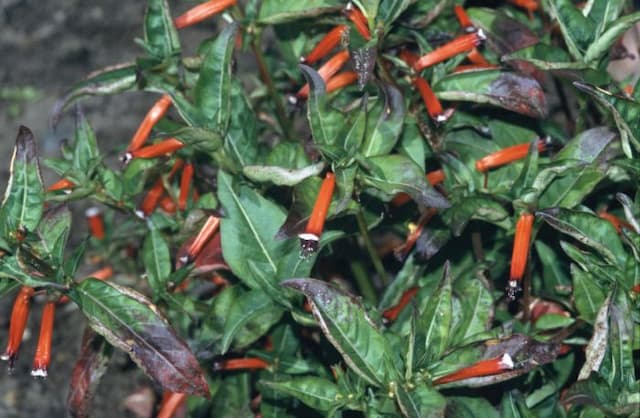
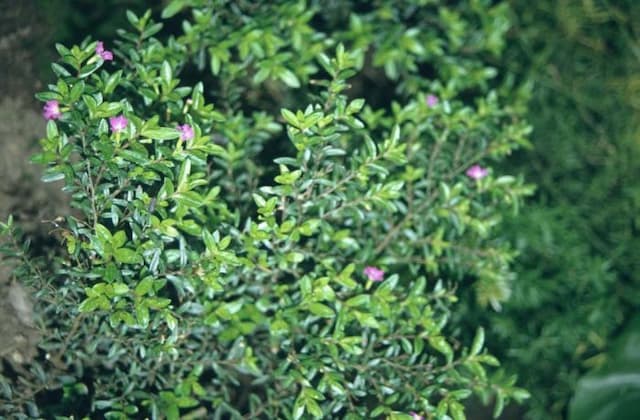

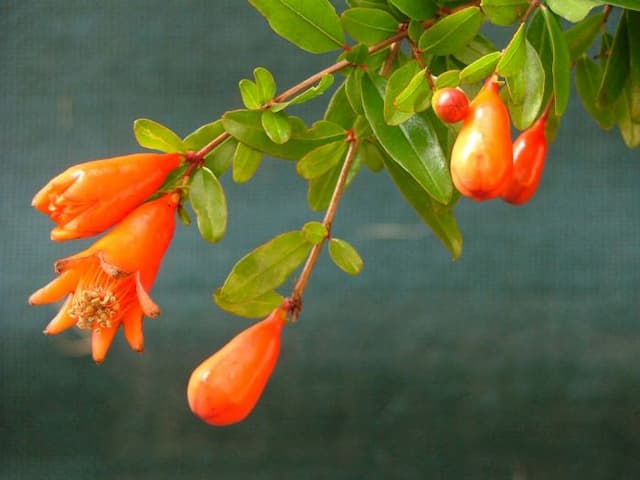
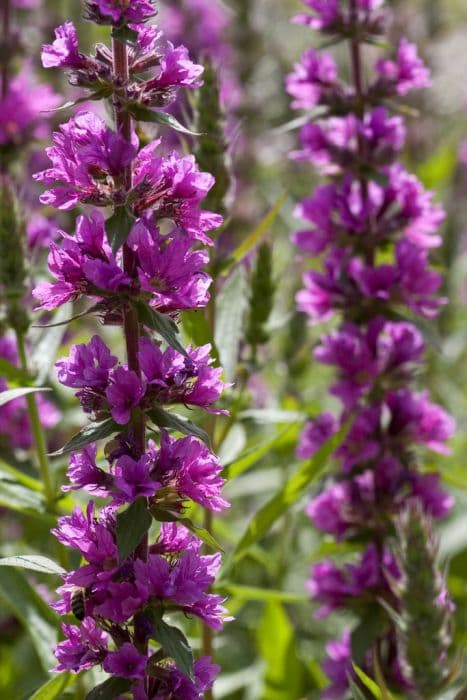
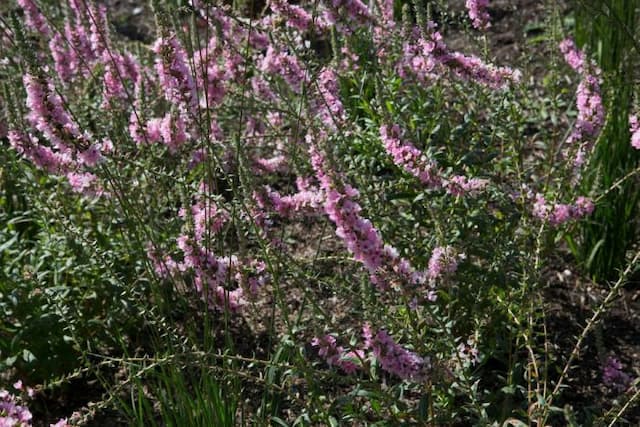
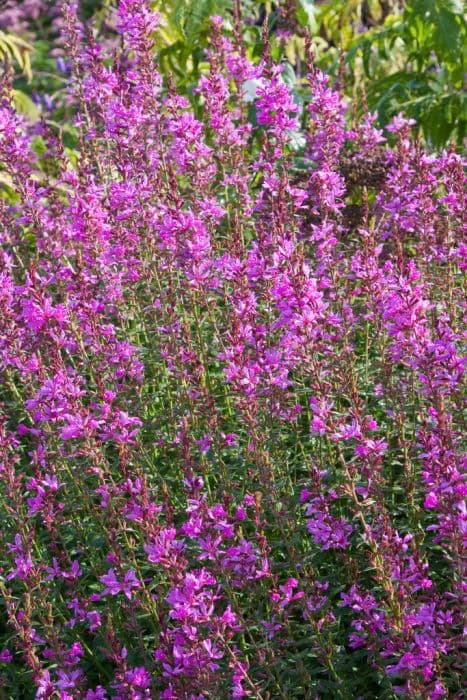
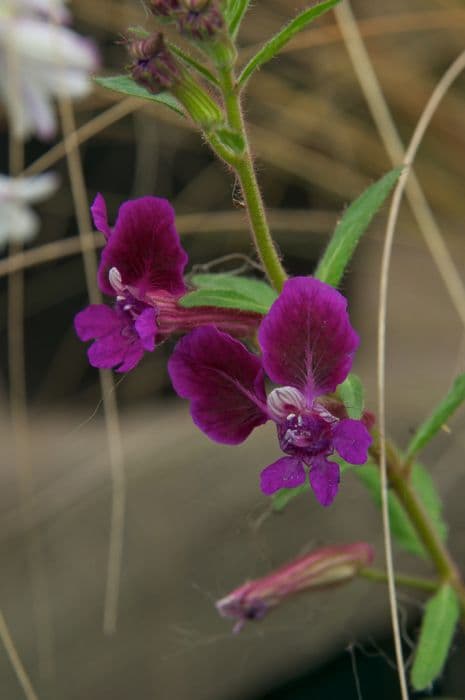
![Crape myrtle [Braise d'Été]](/_next/image?url=https%3A%2F%2Fplants-admin.emdemapps.com%2Fimages%2Fplants%2F%2Fimages%2F604b63ea2652e.png&w=640&q=75)